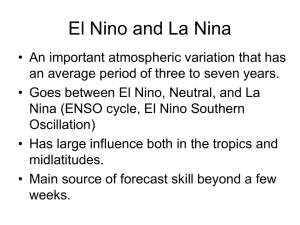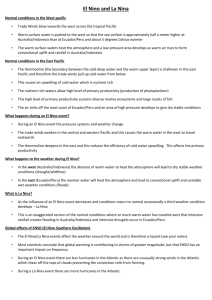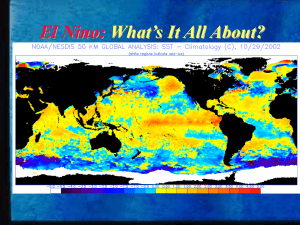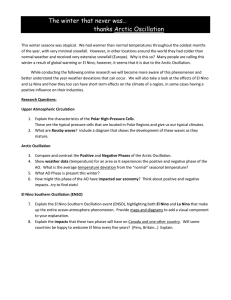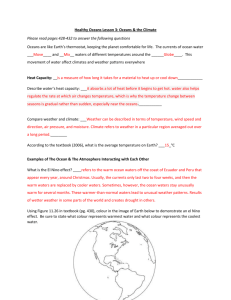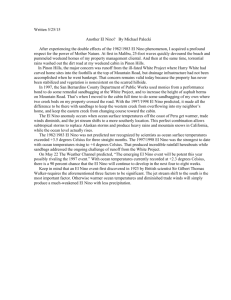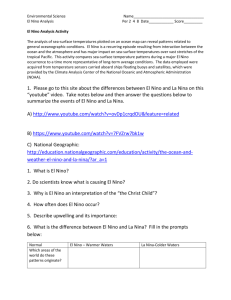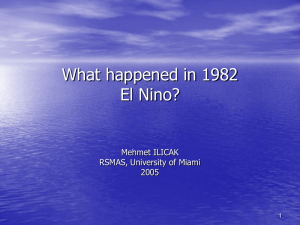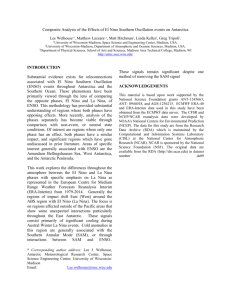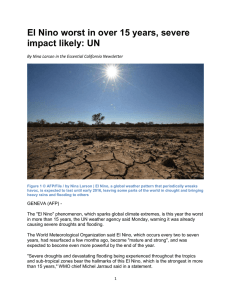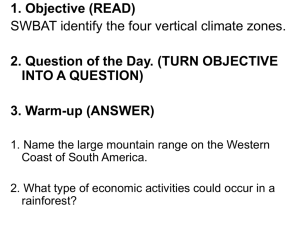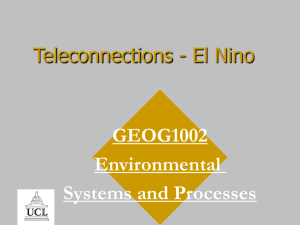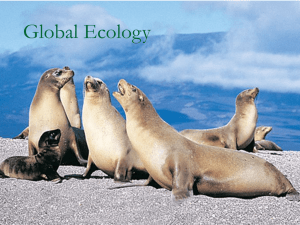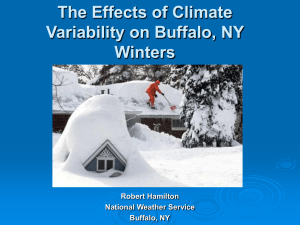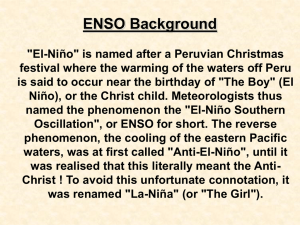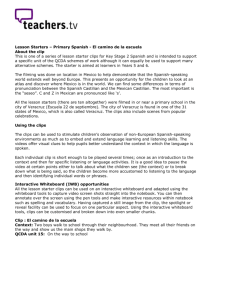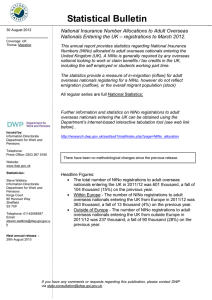http://ww2010 - CarrollEnvironmentalScience
advertisement
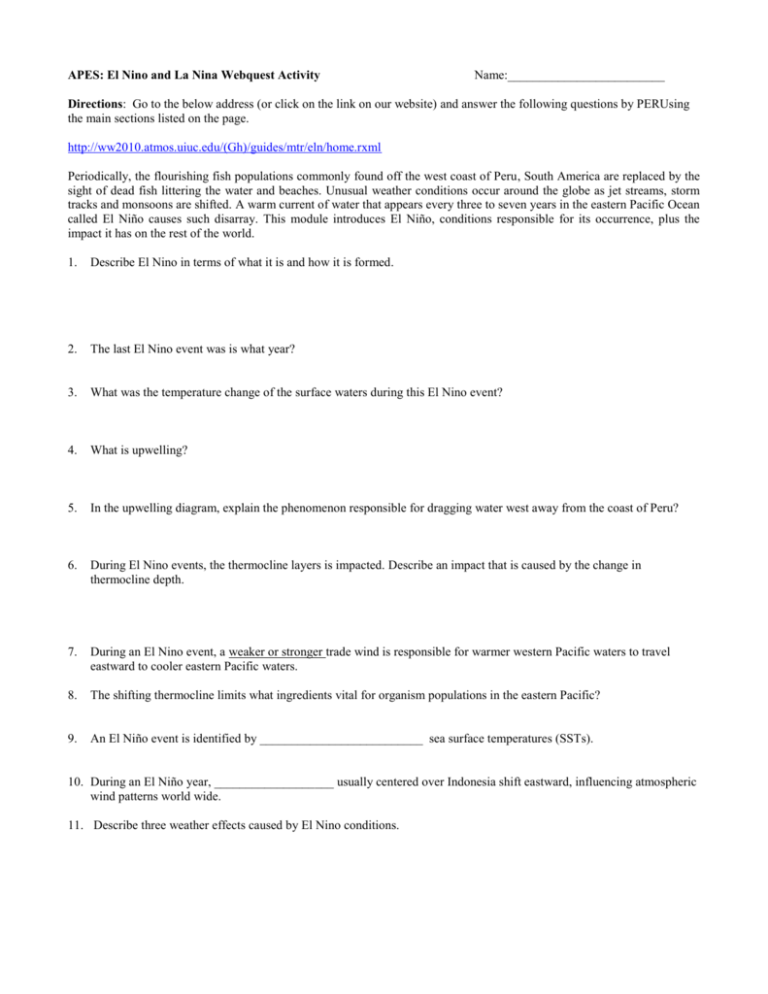
APES: El Nino and La Nina Webquest Activity Name:_________________________ Directions: Go to the below address (or click on the link on our website) and answer the following questions by PERUsing the main sections listed on the page. http://ww2010.atmos.uiuc.edu/(Gh)/guides/mtr/eln/home.rxml Periodically, the flourishing fish populations commonly found off the west coast of Peru, South America are replaced by the sight of dead fish littering the water and beaches. Unusual weather conditions occur around the globe as jet streams, storm tracks and monsoons are shifted. A warm current of water that appears every three to seven years in the eastern Pacific Ocean called El Niño causes such disarray. This module introduces El Niño, conditions responsible for its occurrence, plus the impact it has on the rest of the world. 1. Describe El Nino in terms of what it is and how it is formed. 2. The last El Nino event was is what year? 3. What was the temperature change of the surface waters during this El Nino event? 4. What is upwelling? 5. In the upwelling diagram, explain the phenomenon responsible for dragging water west away from the coast of Peru? 6. During El Nino events, the thermocline layers is impacted. Describe an impact that is caused by the change in thermocline depth. 7. During an El Nino event, a weaker or stronger trade wind is responsible for warmer western Pacific waters to travel eastward to cooler eastern Pacific waters. 8. The shifting thermocline limits what ingredients vital for organism populations in the eastern Pacific? 9. An El Niño event is identified by __________________________ sea surface temperatures (SSTs). 10. During an El Niño year, ___________________ usually centered over Indonesia shift eastward, influencing atmospheric wind patterns world wide. 11. Describe three weather effects caused by El Nino conditions. 12. Name the five major fishing grounds in the world. 1. 2. 3. 4. 5. 13. Upwelled deep sea water is rich in _________________ which can sustain large fish populations. 14. Describe a consequence of a deeper thermocline for the fish. 15. How does El Nino contribute to Poultry price increases?? 16. Summarize what you now know about El Nino and La Nina including similarities, differences, and the parts of the world both impact.

